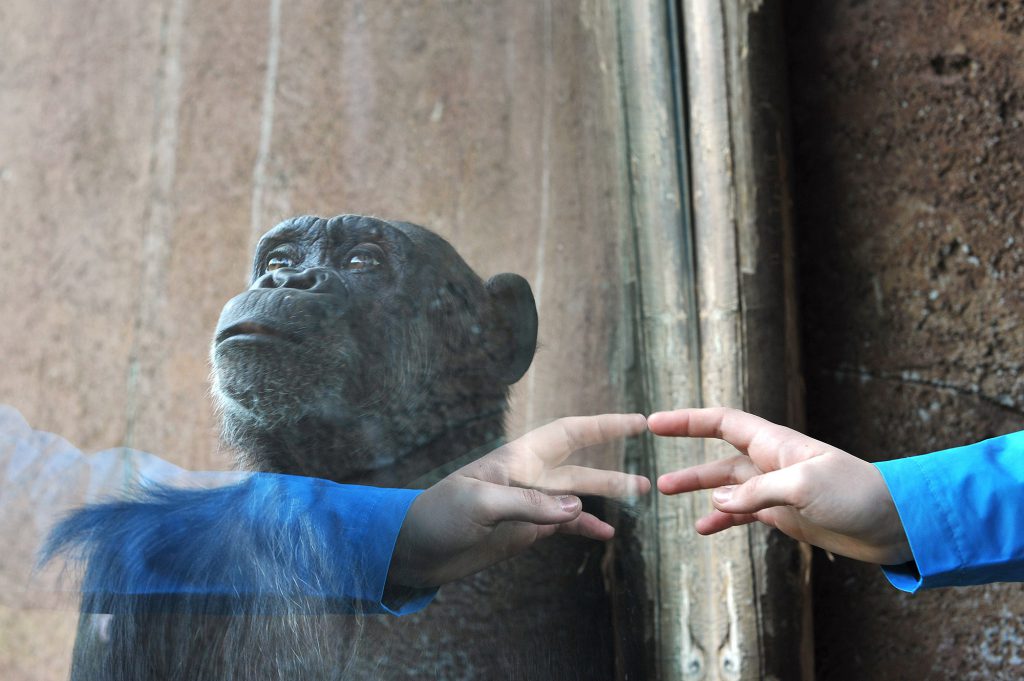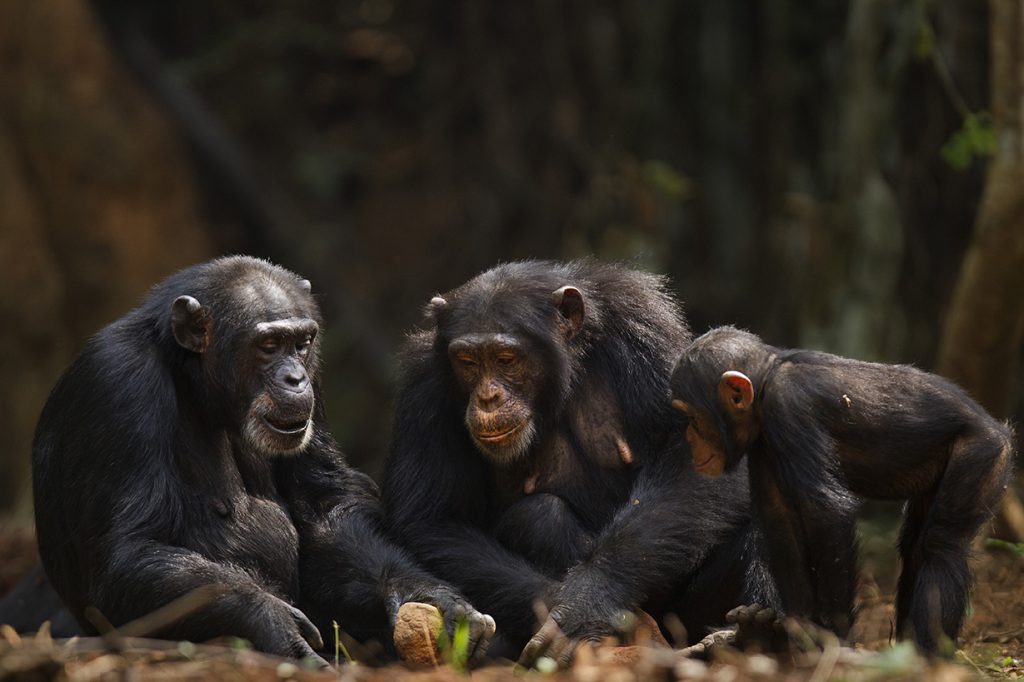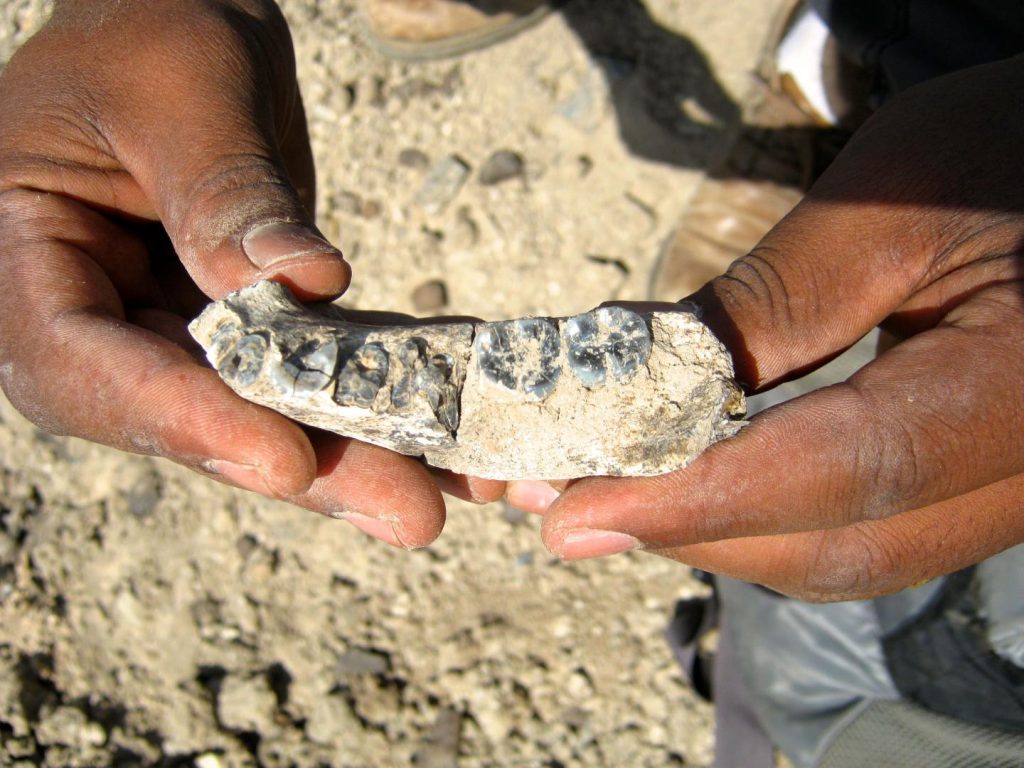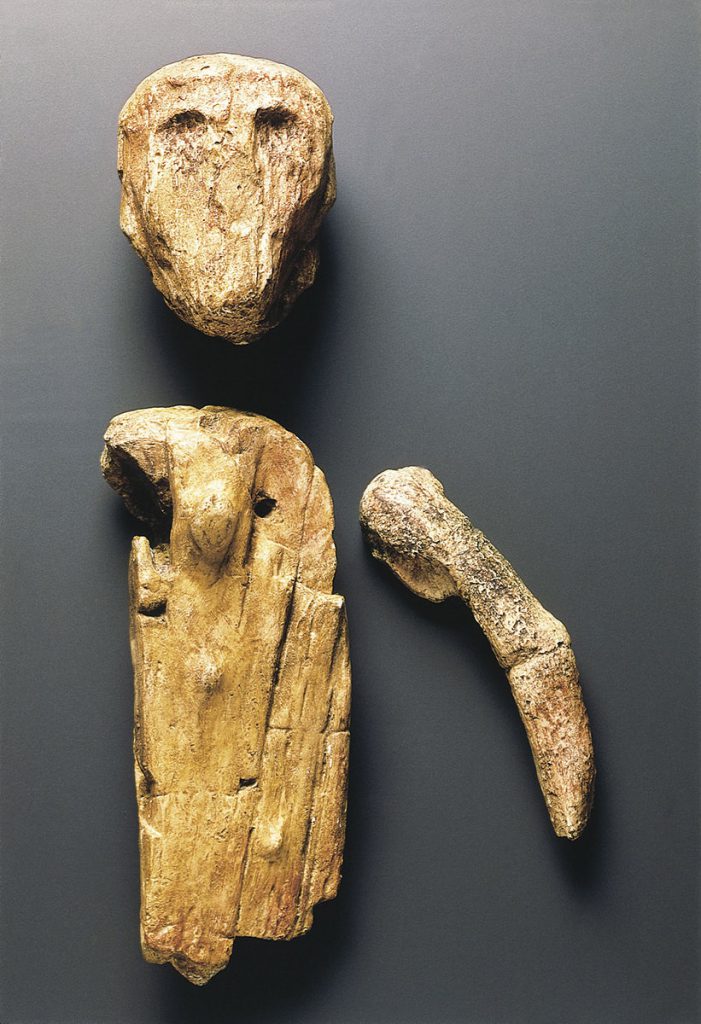Chimpanzees Can’t Tell Us Much About Being Human

Do we gain insight by comparing President Trump to a chimpanzee? Can we learn something useful about gender-based violence among humans by studying other primates? Can observing chimpanzees or bonobos tell us why humans go to war or how we can get along better?
The urge to try and find the animal “roots” for human behavior is enticing because humans are animals. We are mammals, primates, and hominoids (the superfamily of apes). Due to these realities, we share more of our evolutionary history, our DNA, and our physiology with chimpanzees (including bonobos) than with any other living thing. In light of our commonalities, many researchers look to the chimpanzee world in order to better understand the human one.
The argument goes that if warfare, sexual coercion, male aggression, the creation and use of tools, hunting, and other patterns show up in both chimpanzees and humans, then these are evolutionarily old, shared traits. Thus, understanding the reasons behind these behaviors in chimps can offer insight into similar behaviors in humans.
This premise is nice, but it is mostly wrong.
There is significant overlap between humans and chimpanzees. However, to draw evolutionary insights from comparisons between species, we must be sure that we are comparing the same underlying evolutionary processes and that “similar” patterns are indeed similar.
Most of what chimpanzees and humans do today is not directly comparable—because we have evolved independently for millions of years. Along those very different evolutionary paths, both species have picked up a suite of distinctive ways of being in the world.
Recently, and with good reason, much of our focus has been on our extensive connections to our closest relatives and the rest of the natural world. There are many reasons to study these links, including as an opportunity to dispel erroneous and even dangerous thinking. Historically, through to the present day, certain scholars, philosophers, and religious thinkers have argued that human “nature” lies outside of the natural world, with no connection to other living things. For example, a conviction in “human uniqueness” has been used to justify the exploitation of other species. And a refusal to recognize our connection to other primates is a hallmark of anti-evolutionary dogma; rejecting our evolutionary past denies our biology and history, and negates basic realities about our bodies and lives. Recognizing that we share so much with other primates, especially chimpanzees, enables us to tackle human hubris and rebut those who perceive humans as being above or outside of the natural world.
Aspects of our morphology and physiology—that is, the way we look and function—and our general patterns of social behavior are connected to the fact that we are primates. Like chimpanzees (and most primates), we humans place great importance on our social world and abilities. Our society, with its obligatory social intensity, is part of being a primate, part of our evolutionary heritage.
Researchers have observed multiple chimpanzee societies for more than 50 years, so we know a lot about what these primates do and what they don’t do. Chimpanzees have a fascinating array of social traditions (using stone tools to crack open nuts, drinking from leaf cups, “fishing” for termites) and capacities (complex social hierarchies, deep social relationships, complex group conflict with other communities of chimps). Studying these behaviors can tell us a lot about chimpanzees and their evolution. It may also reveal some things about humans.
But we also know chimpanzees don’t have cash economies, governments, religious institutions, creeds, or fanatics. They don’t arrest and deport one another, or create massive economies of material and social inequity. They don’t change planet-wide ecosystems, build cities and airplanes, drive thousands of other species toward extinction, or write science blogs. We do.
We are a very particular mammal, primate, and hominoid that is able to look at the world around us, see it as it is, imagine entirely new possibilities, and convert those imaginings into material reality—or at least try to. We have evolved the capacity to be the most compassionate, the cruelest, the most creative, and the most destructive of all life on this planet. And we demonstrate these abilities often. How this difference came to be matters. It’s only by delving into humanity’s distinctive evolutionary history, since our split with the other ape lineages, that we are better able to develop a fuller understanding of the human niche, of what makes us specifically human.
Focusing primarily on the continuities between humans and chimpanzees (and other animals) without recognizing, understanding, and investigating the discontinuities confounds our ability to offer evolutionary insights into critical contemporary challenges. Racism and global climate change are not explained by our shared history with chimpanzees, nor are gender diversity, the #MeToo movement, and the recent rise in nationalism.
In the 7 to 10 million years since the human-chimpanzee lineage split, we have changed a lot. Genetically, we’ve accumulated 17 million novel single-nucleotide polymorphisms—that is, single location changes in our DNA. We’ve also had 2.5 million insertions and deletions (mixing up of the DNA) when compared with chimpanzee genomes. New research has even identified dozens of genes related to brain structure and function that differ between humans and chimpanzees. Morphologically, we’ve increased our fat-to-muscle ratio and reorganized the patterns of bones, muscles, and ligaments in our hands, feet, faces, and lower limbs.
A brief journey through our evolutionary history further illuminates the complexity of the differences between us and our primate relatives. The first evidence for members of our own genus, Homo, dates to between 2 and 3 million years ago. Like all primates, these earliest ancestors had complex social lives, but the intensity of their group cohesion exceeded most other primates. They also walked on their hind legs.
These ancestors could see in stones the potential for a tool, a vision they inherited from the hominins who came before them. They not only reshaped rock into new forms for their benefit, they cultivated, expanded, and mastered that ability—going beyond any other species on this planet.
In the next 1.5 million years or so, Homo changed in increasingly complex ways, both behaviorally and neurobiologically. A powerful feedback loop had begun: New abilities created opportunities that in turn increased what we could achieve. The innovations included more complex stone toolmaking, communal care of children, control of fire, and the creation of meaning-laden materials. Our capacity to forage grew, as did our ecological expansion across the planet.
And our brain increased in size and complexity. Today, when contrasted with other mammals, including many primates, our brains have grown as much as six times larger relative to our body size. We’ve ramped up the relative size and complexity of the frontal lobes and the overall cortex, areas of the brain particularly associated with complex thought, planning, and decision-making. It takes as much as three times as long for humans to develop an adult brain compared with our closest relatives.
In the last 300,000 to 400,000 years, human material and social complexity ratcheted up. Human societies dawned as geographically distant populations of Homo began to interact with greater frequency. Out of these associations, distinctively human ecologies were born.
At this time, we began to develop a rich and amazingly complex suite of morphological, vocal, gestural, and symbolic processes (called “language”) that enabled humans to share and receive information at multiple levels. We can now discuss the past and future, inner states and imaginings, and hopes and dreams. We convey these concepts far and wide, and even insert them into material items, such as books, papers, and recordings. Thanks to recorded histories and stories, humans—unlike any of our relatives—can communicate our thoughts, ideas, experiences, wishes, and visions to other humans even after we are dead.
Material evidence for our ancestors’ creative meaning-making suggests that such practices became commonplace roughly 40,000 to 300,000 years ago. Engravings, beads, cave art, and figurines reveal how our forebears imagined novel items and representations, and how they created or modified materials to re-envision themselves and their world. This period is also likely when they began to create explanations for observable phenomena, such as storms, the movement of the moon, and even death.
These people had the capacity to think in ways similar to how we think today. And the resemblance did not end there. Fossils from this time period look more like the bones of contemporary humans than any previous populations.
By a few hundred thousand years ago, we had grown out of socially complex hominin origins to become organisms who existed in a highly constructed, innovative, and hyper-complex niche. Our species had become one that used imagination, complex material and social networks, and dense, multifarious communication to reshape itself and the world around it.
In the last 8,000 to 15,000 years or so, we have created concepts of property, ownership, and identity that have shaped how we structure our lives. Breakthroughs in how we grow and store food, and the domestication of some animals and plants, allowed us to arrange ourselves in new residential patterns. The resulting transformations in our social organizations ushered in creative ways of making a living.
And structural innovations and new social phenomena housed and birthed emerging social orders. Cities, communal monumental architecture, religious institutions, large-scale politics and economies, inequality, and warfare all arose, expanded, and flourished. Each advance reconfigured the possibilities and patterns of distinctively human behavior.
During this recent phase in human history, gender, politics, and economics influenced—to a much greater degree than in previous eras—how people thought about themselves and how they experienced and envisioned the larger world. These recent, and increasingly complicated, processes opened the doors for progressively more and more structured, far-reaching, and unequal human social realities.
Chimpanzees (and many other animals) do have complex societies and social lives. But it is critical to place humanity and all that our species has done in the context of our distinctive evolutionary history.
All of the skills that humans acquire, use, and alter across our lifetimes are particularly (but not exclusively) facilitated by the processes and patterns of our distinctive evolutionary past and present. Human behavior has to be examined in the context of what humans are and do, how we develop our bodies and minds. Many human processes have no direct comparisons in chimpanzees because of the substantive differences between our evolutionary trajectories.
It is therefore wrong to compare Trump to a chimpanzee. Stating that Trump is like an aggressive alpha male chimp implies that the deep explanation for his behavior stems from evolutionary roots and behavioral patterns he shares with chimpanzees. That stance disregards the distinctively human processes and contexts at play in contemporary humanity that underpin and facilitate his actions. These contexts include the history and current reality of specific inequalities that stem from economic, racist, and sexist processes in our society. We need to draw on these realities in order to effectively critique and challenge his behavior.
Humans and chimpanzees do share much in common, but when it comes to dealing with contemporary human behavior, we must look to human evolutionary histories and current realities. That approach will get us a lot further than facile comparisons to our closest relatives.
This article was republished on Discover.



































